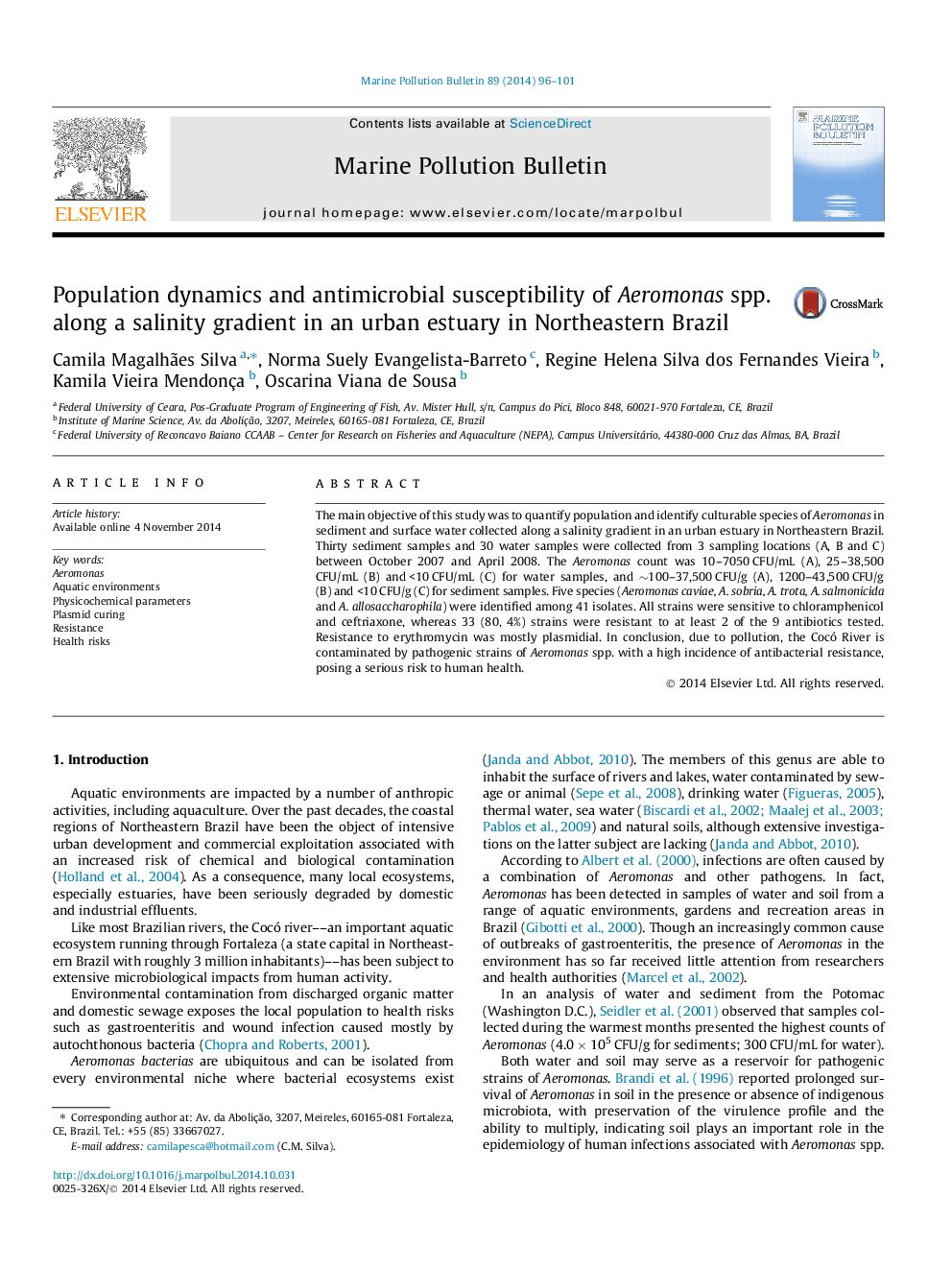| Article ID | Journal | Published Year | Pages | File Type |
|---|---|---|---|---|
| 6357873 | Marine Pollution Bulletin | 2014 | 6 Pages |
Abstract
The main objective of this study was to quantify population and identify culturable species of Aeromonas in sediment and surface water collected along a salinity gradient in an urban estuary in Northeastern Brazil. Thirty sediment samples and 30 water samples were collected from 3 sampling locations (A, B and C) between October 2007 and April 2008. The Aeromonas count was 10-7050 CFU/mL (A), 25-38,500 CFU/mL (B) and <10 CFU/mL (C) for water samples, and â¼100-37,500 CFU/g (A), 1200-43,500 CFU/g (B) and <10 CFU/g (C) for sediment samples. Five species (Aeromonas caviae, A. sobria, A. trota, A. salmonicida and A. allosaccharophila) were identified among 41 isolates. All strains were sensitive to chloramphenicol and ceftriaxone, whereas 33 (80, 4%) strains were resistant to at least 2 of the 9 antibiotics tested. Resistance to erythromycin was mostly plasmidial. In conclusion, due to pollution, the Cocó River is contaminated by pathogenic strains of Aeromonas spp. with a high incidence of antibacterial resistance, posing a serious risk to human health.
Keywords
Related Topics
Physical Sciences and Engineering
Earth and Planetary Sciences
Oceanography
Authors
Camila Magalhães Silva, Norma Suely Evangelista-Barreto, Regine Helena Silva dos Fernandes Vieira, Kamila Vieira Mendonça, Oscarina Viana de Sousa,
